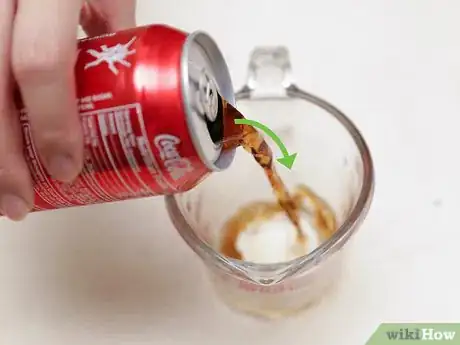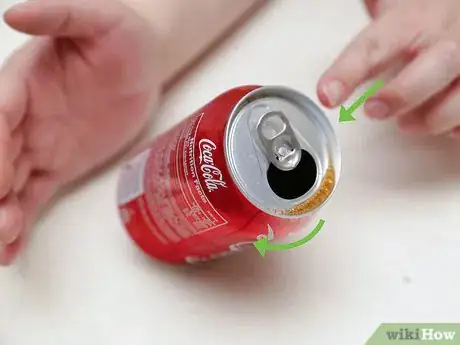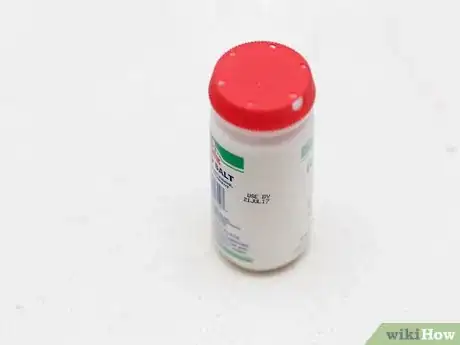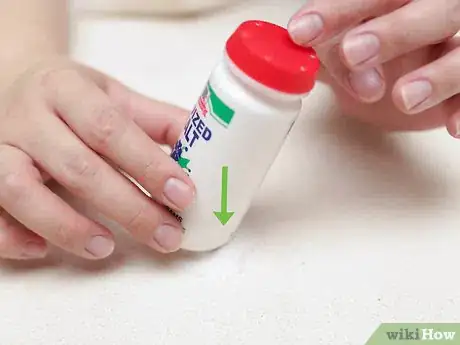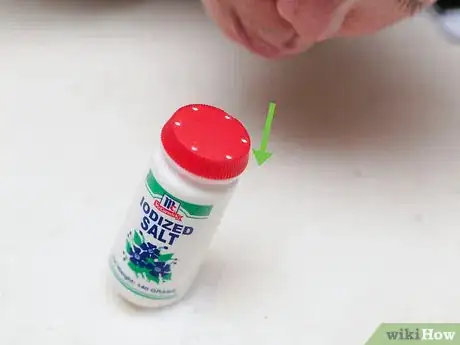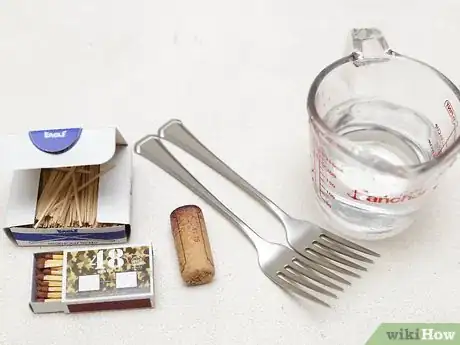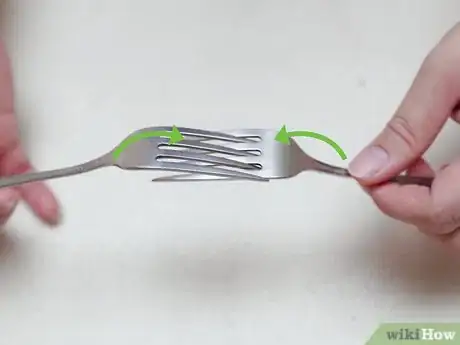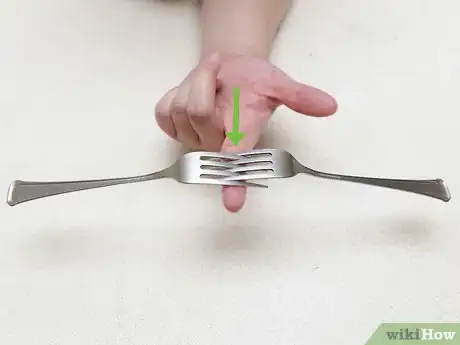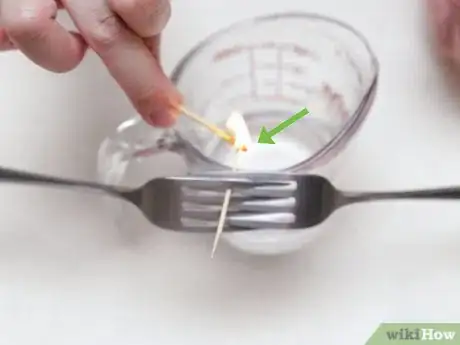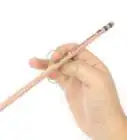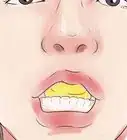X
This article was co-authored by wikiHow Staff. Our trained team of editors and researchers validate articles for accuracy and comprehensiveness. wikiHow's Content Management Team carefully monitors the work from our editorial staff to ensure that each article is backed by trusted research and meets our high quality standards.
This article has been viewed 116,226 times.
Learn more...
Ever see someone balance a soda so that it sits at an angle? This is a cool trick that can be done with a normal can of soda and nothing else. It’s simpler than it looks, and with practice, you can amaze your friends at the dinner table with the power of physics.
Steps
Method 1
Method 1 of 3:
Balancing a Soda Can
-
1Empty out one half to one third of a soda can. The precise amount in the can makes all the difference to its balancing ability. This amount isn’t precise (not without a heaping helping of math), so you will have to adjust as necessary.[1]
-
2Tilt the can at a 45 degree angle. You want to tip the soda so that it rests on the groove that encircles the bottom of the can. Take care, as the movement of the liquid will cause the balance of the can to teeter until the liquid comes to rest.
- You’re looking to reach the center of balance between the can and liquid inside. On most soda cans the amount of liquid required will be the same, but this can depend on the size of the can.
- Keep trying until you get the feel for the tilt and the balance. Work slowly! Move too hastily and you will spill the soda everywhere.
Advertisement -
3Observe and adjust. Keep your hands close to the can on your first tries so you won't spill it everywhere. If the can will not balance, you may have to drain additional liquid from the can, or even add more liquid.
- Lean the can "backwards", away from the opening you drink out of. That way, if it does fall over, you can pick it up again before much spills out.
-
4Give the can a little push. Once you have mastered balancing the can at a 45 degree angle, try giving it a gentle push. It will slowly roll around on its edge and look even more astounding. Behold the power of science!
Advertisement
Method 2
Method 2 of 3:
Balancing a Salt Shaker
-
1Find a salt shaker. A salt shaker similar to a standard one you would find at most restaurants will work. Make sure the shaker has some salt to spare, as this trick doesn’t work without salt available.
- Salt shakers without a beveled edge may have a more difficult time performing this trick, as it is harder for the salt to wedge itself under the shaker and prop it aloft. Top heavy salt shakers may also present a problem.
-
2Pour a small amount onto the table. Not much salt is needed for balancing the shaker. Shake just a small amount, roughly the size of a quarter, onto the table. Don't pour too much - you don't want to make a mess, and only a small amount is necessary.
-
3Press the bottom edge of the salt shaker into the salt pile. Press the shaker all the way into the salt, and occasionally let go to see if the shaker has balanced itself. Don’t get discouraged if it doesn’t work at first – this part is largely trial and error. There is no trick!
- This can work with sugar crystals as well. However, it is a more difficult to achieve balance, as sugar granules are more fine, despite having a similar shape.
-
4Blow away the remaining salt. Once the shaker is stable and in place, blow the remaining salt away. This will remove any trace of salt, except for the few granules that are holding the shaker in place. It will appear the salt shaker is standing askew on its own. Confound your friends with the power of science!
- This can work with a pepper shaker as well, though it cannot balance on pepper!
- Salt granules have a square shape, meaning they have flat sides that can easily prop the salt shaker into place.[2]
Advertisement
Method 3
Method 3 of 3:
Balancing Utensils at the Table
-
1Gather up the materials. Grab several utensils that you are not particularly worried about. You will be pushing a fork and spoon together and balancing them on a glass, so they are bound to fall a few times, and possibly get dinged or bent, as you get the hang of the trick. In total, you will need the following:
- Two forks.
- A toothpick.
- A glass of water.
- A wine cork.
- Matches.
- A spoon (optional).[3]
-
2Push the two forks together. Push each fork’s teeth into one another so that it is snugly interlocked. You want to be able to operate the two utensils as one “unit.” When you pick up the handle of one utensil, the other utensil should be lifted as well.
- You may use a spoon and fork rather than two forks if you desire. Note that this may bend the teeth of one of the forks.
-
3Find the center of mass of the utensils. Rest the middle of where the utensils meet on your finger. Move the utensils back and forth on your finger until you they are perfectly balanced, with no other help needed to stay perched on your finger. This is the center of mass.
-
4Insert a toothpick into the center of mass. Force the toothpick into the center of mass by wedging it into where the two forks’ teeth meet. Use just enough force to move the toothpick into the forks without breaking apart their hold to one another. This might take a few tries!
- If your toothpick breaks apart or can’t find a wedge, try taking the forks apart and putting them back together, a little less snug this time.
-
5Balance the forks and toothpick on the rim of a glass. Find the point on the body of the toothpick that will perfectly balance the forks on the rim. The forks will lay horizontally along the rim of the glass, encircling the top.
- A little trial and error is all that is needed. You can try starting with a longer tooth pick if that helps you achieve the balance needed.
- You can also balance utensils this way on surfaces other than glasses. Try salt or pepper shakers if they're available![4]
-
6Burn the edge of the toothpick. Use a match and light the end of the toothpick overhanging the glass on fire. The toothpick will slowly burn away. Continue to do so until only the portions of toothpick touching the rim and overhanging. Wipe away the burned portions of toothpick to complete the illusion.
Advertisement
Community Q&A
-
QuestionWhat is the maximum amount of water to have a pop can balance on its side?
 Community Answer100 milliliters of water in a normal can will do fine. It always works, but make sure it is on a flat surface.
Community Answer100 milliliters of water in a normal can will do fine. It always works, but make sure it is on a flat surface.
Advertisement
Warnings
- Make sure you have adult supervision if you are a child and wish to try the utensil trick.⧼thumbs_response⧽
Advertisement
Things You'll Need
- A soda can
- A relatively stable surface
- Utensils
- Matches/a lighter
- Toothpick
- A glass
- Salt shaker
- Salt
References
About This Article
Advertisement
